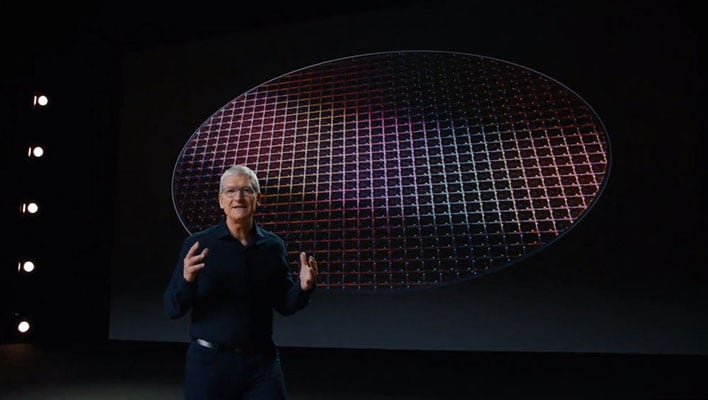Apple Silicon Powered Macs To Support Thunderbolt 4 Despite Abandoning Intel Chips

Breakups can be awkward. Sure, one or the other might want to remain friends, but then someone new comes along and that goes right out the window. Be that as it may, Apple and Intel seem intent on remaining friends, to a degree, as Apple finds itself embracing ARM for its own custom chips. What does that mean for the future of Thunderbolt on Mac systems, and namely Intel's newly minted Thunderbolt 4 specification? It's sticking around.
This was not a foregone conclusion, though also not surprising. Apple is in the midst of a two-year transition plan to move away from using Intel CPUs in its Mac system in favor of custom designed silicon based on ARM. There will also be new Mac systems in the near future that still sport Intel chips, and it stands to reason those will support Thunderbolt. But it until now, it wasn't clear if that would extend to when Apple's transition to its own silicon is complete.
"Over a decade ago, Apple partnered with Intel to design and develop Thunderbolt, and today our customers enjoy the speed and flexibility it brings to every Mac. We remain committed to the future of Thunderbolt and will support it in Macs with Apple silicon,” Apple spokesperson told The Verge.
While perhaps not shocking, it is nonetheless interesting, especially since Apple has not implemented Thunderbolt connectivity on any non-Intel products up to this point. That includes the iPad Pro with an a12Z Bionic chip inside—it features a USB-C connector, but does not support Thunderbolt 3. Same goes for Apple's Developer Transition Kit.
Thunderbolt 4 builds on the Thunderbolt 3 specification. A lot of it has to do with requiring features that were previously optional. For example, if a manufacturer is seeking Thunderbolt 4 certification, they will have to support for a minimum 40Gbps speed, whereas that was optional on Thunderbolt 3.
The speed requirement lends itself to support dual 4K resolution displays, or a single 8K resolution display. And for data transfers, Thunderbolt 4 offers speeds of up to 32Gbps.
It still remains to be seen what ARM-based Macs will look like on the performance side, and especially the Mac Pro, if that sticks around. A slide from Apple seems to indicate that ARM-based Macs will upend support for third-party GPUs, though perhaps not necessarily for external GPU boxes. We just don't know yet. What we do know, however, is that Thunderbolt will be joining Apple on the ride.

